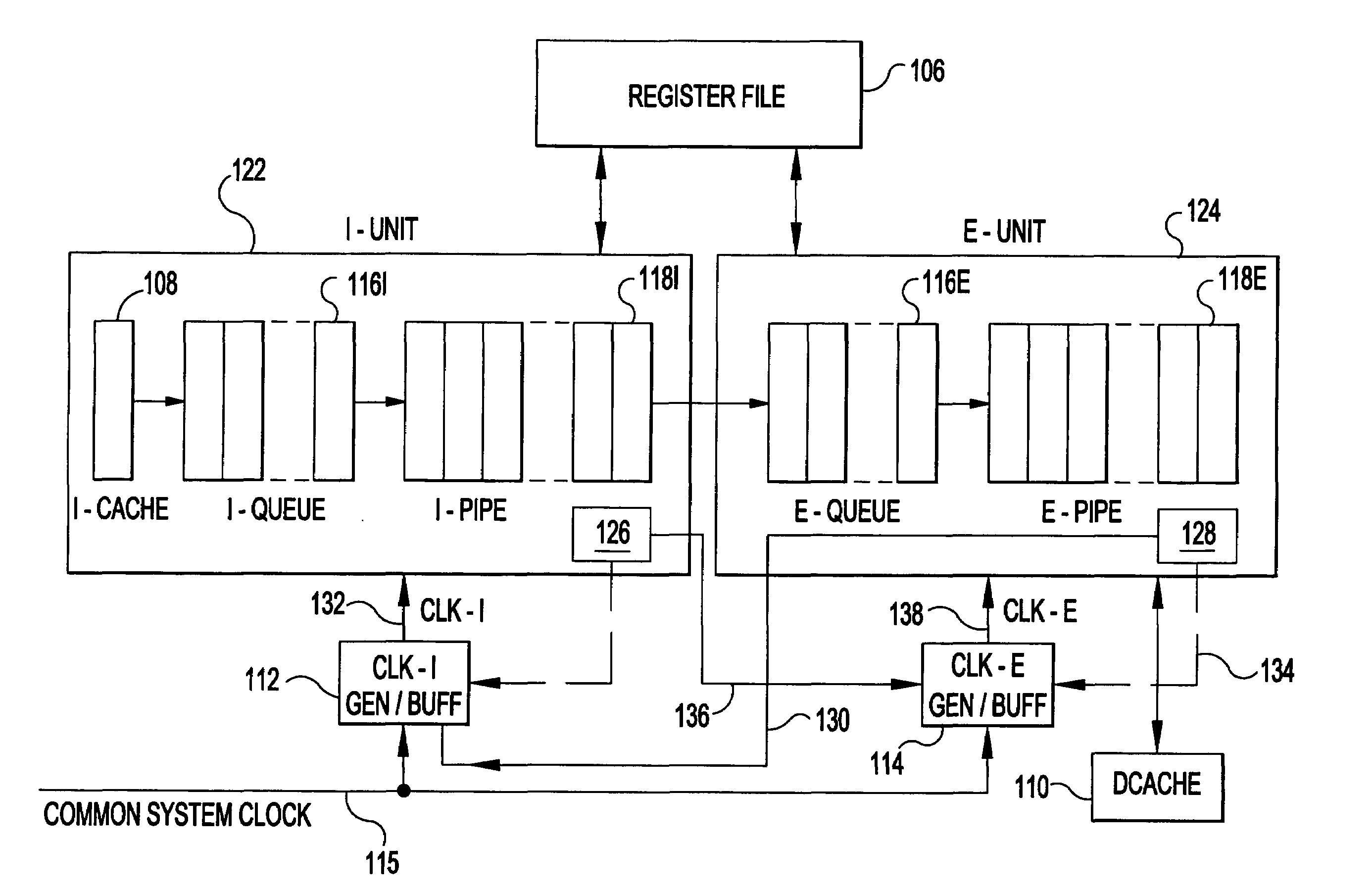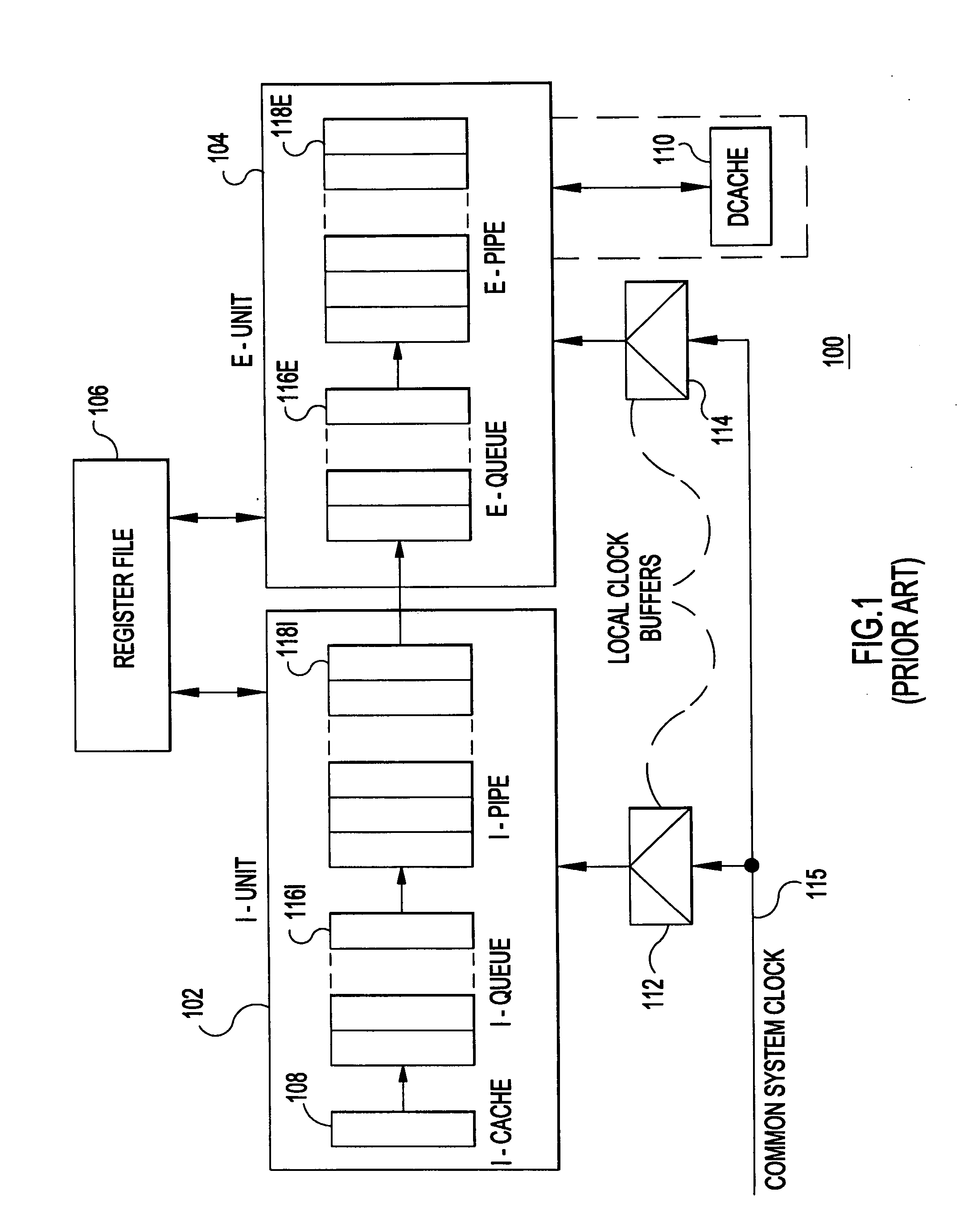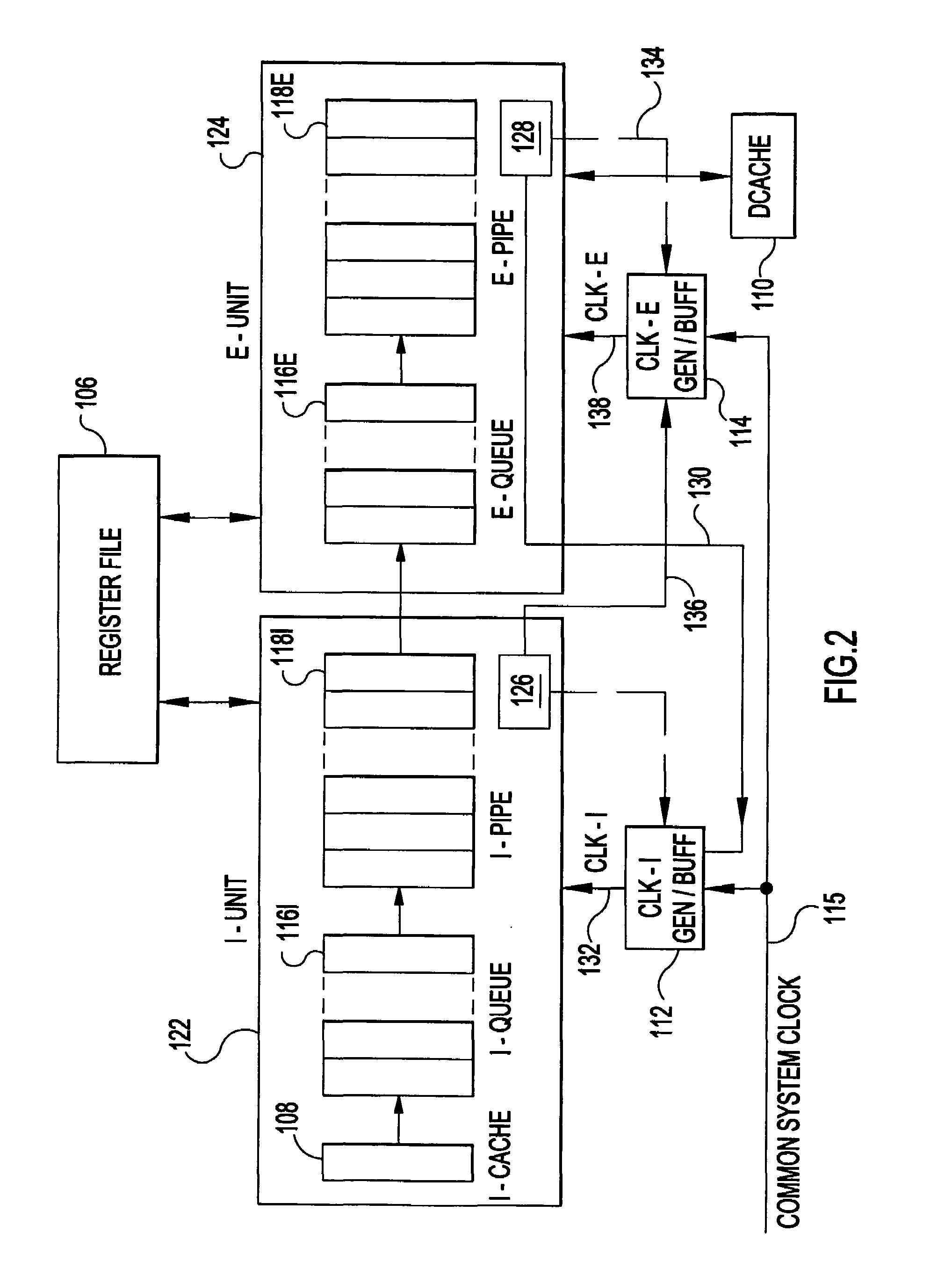Processor with demand-driven clock throttling power reduction
a clock throttling and processor technology, applied in the direction of instruments, liquid/fluent solid measurement, generating/distributing signals, etc., can solve the problems of increasing chip power consumption, increasing cooling and packaging costs, and increasing power consumption of a given clock unit, so as to reduce processor power consumption and achieve the effect of reducing performance loss without appreciable loss
- Summary
- Abstract
- Description
- Claims
- Application Information
AI Technical Summary
Benefits of technology
Problems solved by technology
Method used
Image
Examples
Embodiment Construction
[0027]Turning now to the drawings and, more particularly, FIG. 1 shows a high level block diagram example of a typical state of the art pipelined scalar processor 100 and a corresponding instruction timing diagram. The main functional data path is divided into two major components or units, normally called the instruction unit (I-UNIT) 102 and the execution unit (E-UNIT) 104. Many detailed sub-units and functional logic, e.g., branch prediction logic, within the I-UNIT 102 and E-UNIT 104 are not germane to discussion of the present invention and so, are omitted for clarity of description of the overall clock control in such a processor 100. The processor 100 of this example is representative of a pipelined scalar design that does not include clock-gating to prevent redundant clocking of units, sub-units or attendant storage resources contained therein.
[0028]On-chip storage accessed by one or both units 102, 104 include register file (REGFILE) 106, instruction cache (ICACHE) 108 and ...
PUM
 Login to View More
Login to View More Abstract
Description
Claims
Application Information
 Login to View More
Login to View More - R&D
- Intellectual Property
- Life Sciences
- Materials
- Tech Scout
- Unparalleled Data Quality
- Higher Quality Content
- 60% Fewer Hallucinations
Browse by: Latest US Patents, China's latest patents, Technical Efficacy Thesaurus, Application Domain, Technology Topic, Popular Technical Reports.
© 2025 PatSnap. All rights reserved.Legal|Privacy policy|Modern Slavery Act Transparency Statement|Sitemap|About US| Contact US: help@patsnap.com



